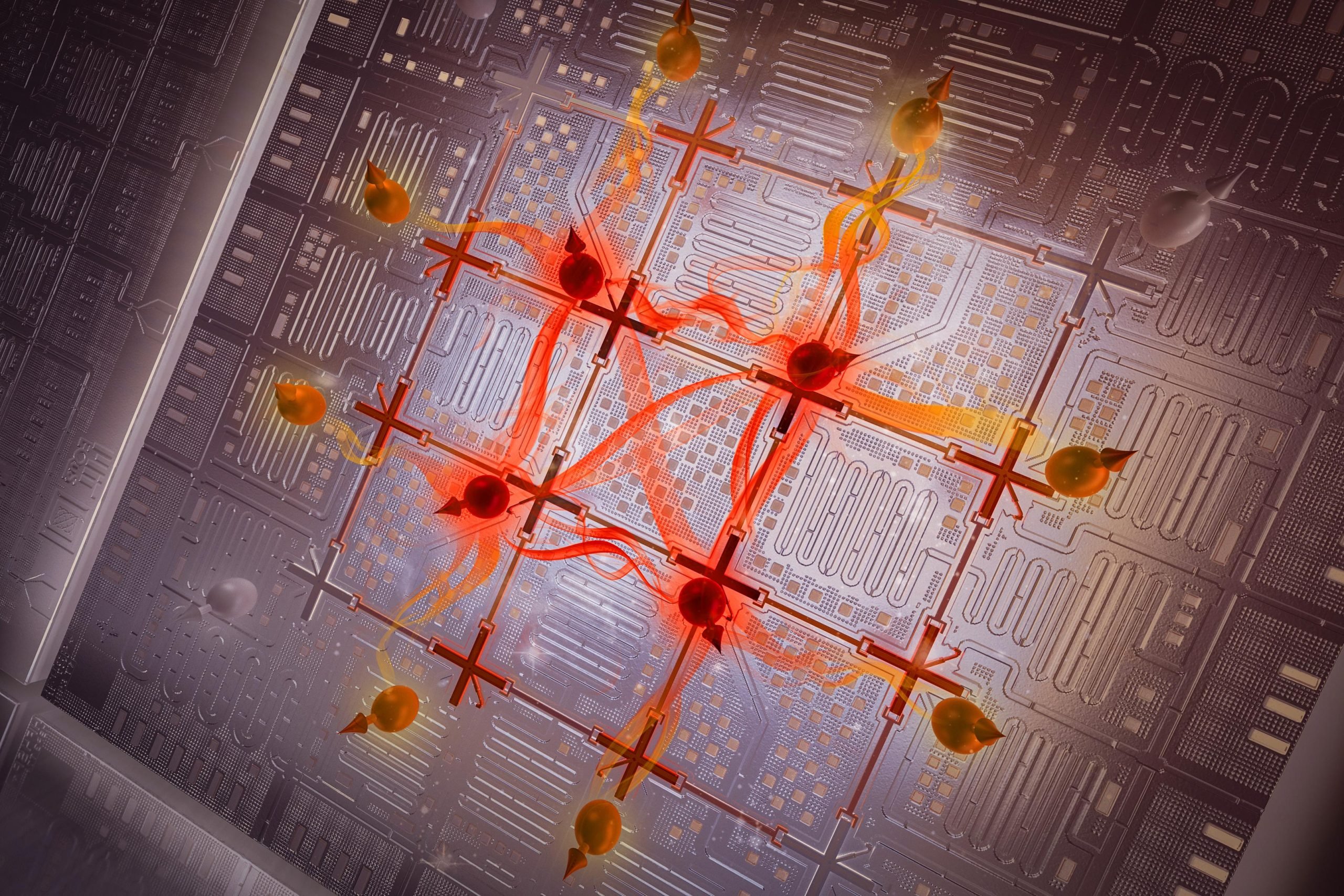
In a groundbreaking development, researchers from the Massachusetts Institute of Technology (MIT) have introduced an innovative technique that significantly enhances our capacity to generate and analyze entanglement within quantum computing systems. This breakthrough could pave the way for more advanced quantum computing capabilities, providing a deeper understanding of quantum mechanics’ intricacies.
Entanglement, a uniquely quantum phenomenon, refers to the intricate correlations that exist between quantum particles. This characteristic feature of quantum systems is critical to the storage and processing of information in ways that classical systems cannot achieve. However, generating specific entangled states, especially in systems with numerous qubits, is a formidable challenge, making the study and categorization of these states complex.
Leveraging microwave technology, the team at MIT’s Engineering Quantum Systems (EQuS) group has skillfully manipulated a quantum processor composed of superconducting circuits. This enabled them to efficiently produce highly entangled states and transition between various forms of entanglement. Some of these forms are more conducive to achieving quantum speed-up, a crucial goal in quantum computing.
Amir H. Karamlou ’18, MEng ’18, PhD ’23, the lead author of the study, emphasized the potential of utilizing quantum processors as tools for advancing physical understanding. The researchers have laid out a feasible roadmap for scaling this technology beyond the capabilities of contemporary classical computing.
Entanglement within a quantum system can be envisioned as the quantum information shared between a subset of qubits and the rest of the system. This can follow an area-law or volume-law, depending on the scaling of shared information with the geometry of the subsystems. Volume-law entanglement, which grows proportionally with the subsystem’s total size, plays a crucial role in the power of quantum computing.
The complexity and computational demand of simulating volume-law entanglement on classical computers grow exponentially with the size of the quantum system. Karamlou highlighted the prohibitive complexity, noting that simulating a system with 80 qubits would require more data storage than the sum of human history’s stored information.
Utilizing superconducting circuits as engineered artificial atoms for qubits, the researchers demonstrated that their processor could efficiently generate and probe both types of entanglement. Their device contained 16 qubits arranged in a two-dimensional grid, with precise tuning to achieve uniform transition frequency across all qubits and additional microwave drives to manipulate the entanglement type.
The experiment showcased the profound capabilities of superconducting quantum processors for simulating complex quantum states and measuring their entanglement. By crossing over from volume-law to area-law entanglement, the team provided experimental verification of theoretical predictions, opening new avenues for determining the nature of entanglement in quantum systems.
Esteemed physicists Peter Zoller and Pedram Roushan, who were not involved in the study, praised the MIT team’s work for its critical insights into quantum simulation and entanglement measurement.
Looking ahead, this breakthrough methodology offers intriguing possibilities for exploring the thermodynamic behavior of complex quantum systems, which are currently beyond the reach of both analytical methods and the world’s most powerful supercomputers. Karamlou envisions future applications in characterizing and benchmarking larger-scale quantum systems and gaining deeper insights into the nature of entanglement within these sophisticated many-body systems.
Published in the prestigious journal Nature, this research marks a significant step forward in quantum computing and our comprehension of quantum mechanics’ underlying principles. Funded by various prestigious organizations, including the U.S. Department of Energy, NASA, and the National Science Foundation, this project underscores the collaborative effort driving advancements in quantum technology.
Source






